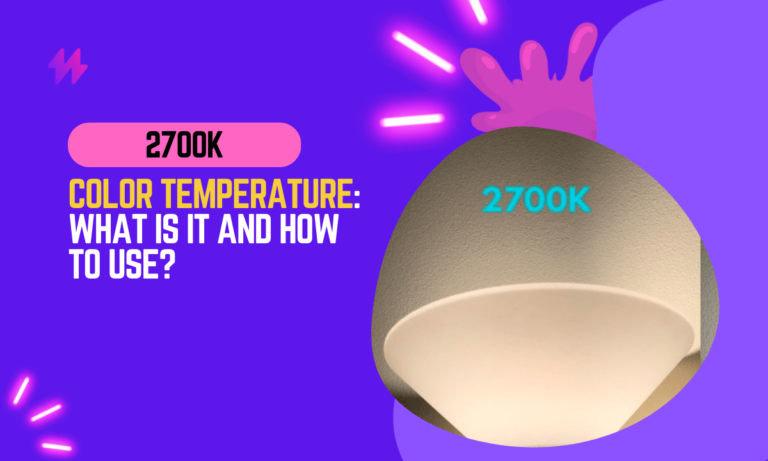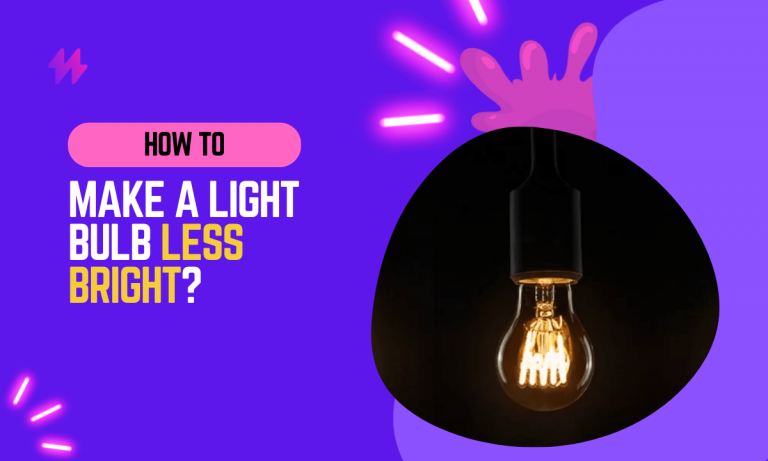Soft White vs Warm White: Crafting the Ideal Ambiance for Your Home
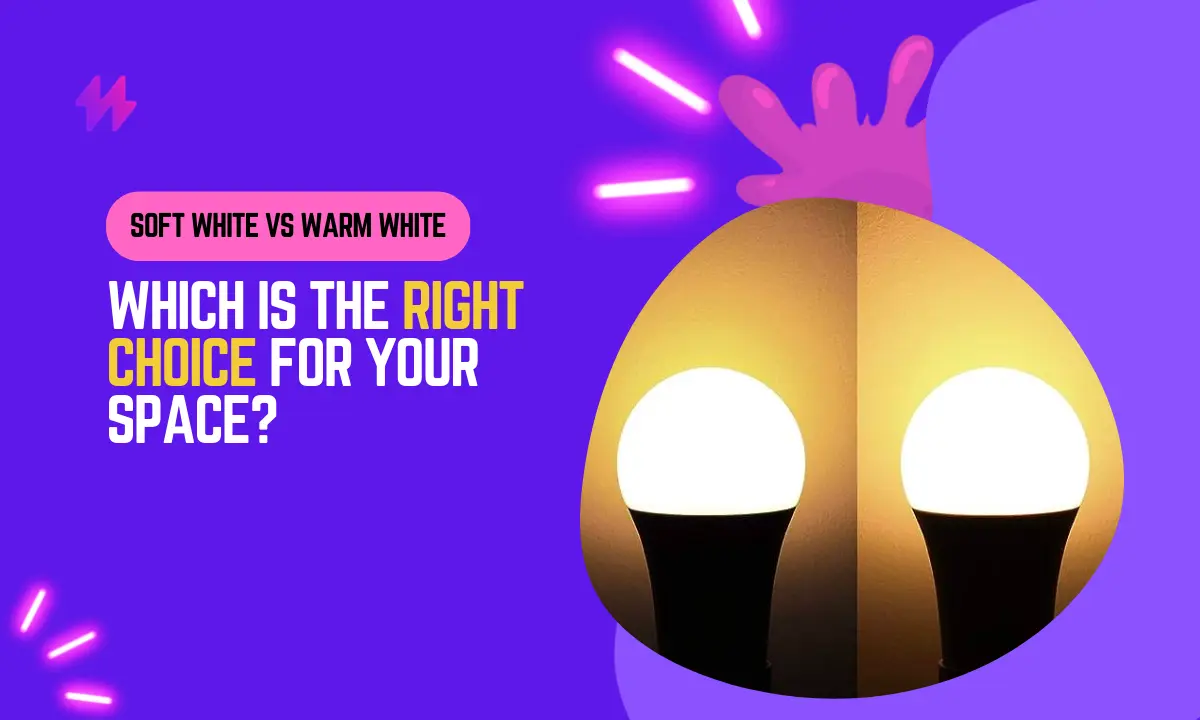
In the modern realm of interior design, lighting plays a pivotal role in shaping the ambiance and mood of any space. The right choice of lighting can transform a dull room into a cozy haven, a vibrant gathering spot, or a tranquil retreat. However, with a myriad of lighting options available, it can be overwhelming to navigate the differences and nuances, especially when it comes to color temperature.
When considering lighting options, two popular choices that often perplex homeowners are “Soft White” and “Warm White” lighting. These terms refer to specific color temperatures that significantly impact the overall look and feel of a room.
To create the perfect atmosphere, it is essential to understand the distinctions between these two lighting options and their suitability for different spaces.
In this LED guide, we will look into the intricacies of “Soft White vs Warm White” lighting. We will shed light on their characteristics, advantages, and applications, providing you with the necessary knowledge to make informed decisions about the lighting that best suits your home.
Whether you are renovating, redecorating, or simply curious about optimizing your lighting choices, this blog will serve as your go-to resource.
Soft white light bulbs are an excellent choice for creating a warm ambiance in dining rooms, especially when aiming for a cozy setting during evening meals. In contrast, warm light is typically ideal for areas like bathrooms and vanity spaces, where a softer glow enhances the overall comfort and aesthetics of the home.
Soft White vs Warm White: Crafting the Ideal Ambiance for Your Home
| Aspect | Soft White Lighting | Warm White Lighting |
| Color Temperature | 2700 to 3000 Kelvin | 2200 to 3000 Kelvin |
| Glow Hue | Slightly yellowish | Yellow to slightly reddish |
| Ambiance | Gentle and soothing | Cozy and inviting |
| Ideal Applications | Bedrooms, living rooms, dining areas, spaces for relaxation | Bedrooms, living rooms, dining areas, spaces for relaxation |
| Decor Compatibility | Complements warm-colored interiors, traditional decor, wooden finishes | Enhances warm color schemes, wooden furnishings, modern and traditional decor |
| Lighting Intensity | Provides soft and comfortable illumination | Offers a warm and inviting glow |
| Task-Oriented Spaces | Not ideal for areas requiring high brightness or focused illumination | Not ideal for areas requiring high brightness or focused illumination |
| Common Settings | Residential homes, cozy cafes, restaurants | Residential homes, hotels, restaurants, welcoming establishments |
| LED Options | Available in energy-efficient LED bulbs | Available in energy-efficient LED bulbs |
You may also like: How Bright is 300 Lumens? Your Lumens Brightness Guide
Soft white light is the perfect middle ground when choosing lamps for contemporary kitchens, as it offers a softer glow compared to warmer bulbs. For those looking to enhance their home setting, smart bulbs can easily adjust the brightness and warmth, making them a good fit for any space around the house.
Soft White Lighting: Key Features and Benefits
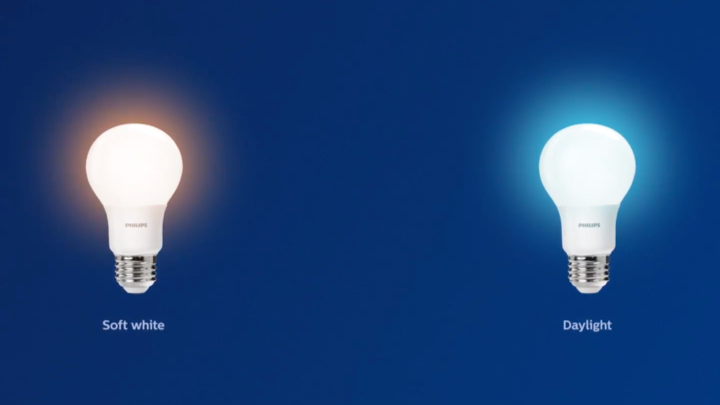
Soft White lighting, also known as warm white lighting or incandescent-like lighting, is a type of artificial light that emits a warm and inviting glow with a slightly yellowish hue. It is designed to replicate the warm, cozy ambiance created by traditional incandescent bulbs.
The color temperature of Soft White lighting typically ranges from 2700K to 3000K on the Kelvin scale, which measures the color appearance of light.
Soft White lighting is widely used in residential and commercial settings, as it provides a comfortable and familiar atmosphere. When illuminated, it creates a soft and gentle environment, making it ideal for areas where relaxation and comfort are desired. Its warm and soothing tones make it a popular choice for bedrooms, living rooms, dining areas, and other spaces where people gather to unwind and socialize.
Also read: 2700K vs 5000K: Differences in Light Temperature
Soft white lighting is an excellent choice for those seeking warmer-temperature lighting solutions, providing a cozy atmosphere that resembles traditional kitchen settings. When deciding between soft white vs warm white, understanding that soft white is the perfect middle ground helps craft the ideal ambiance for your home with comfortable, yellowish-white tones.
Warm White Lighting: A Comprehensive Overview
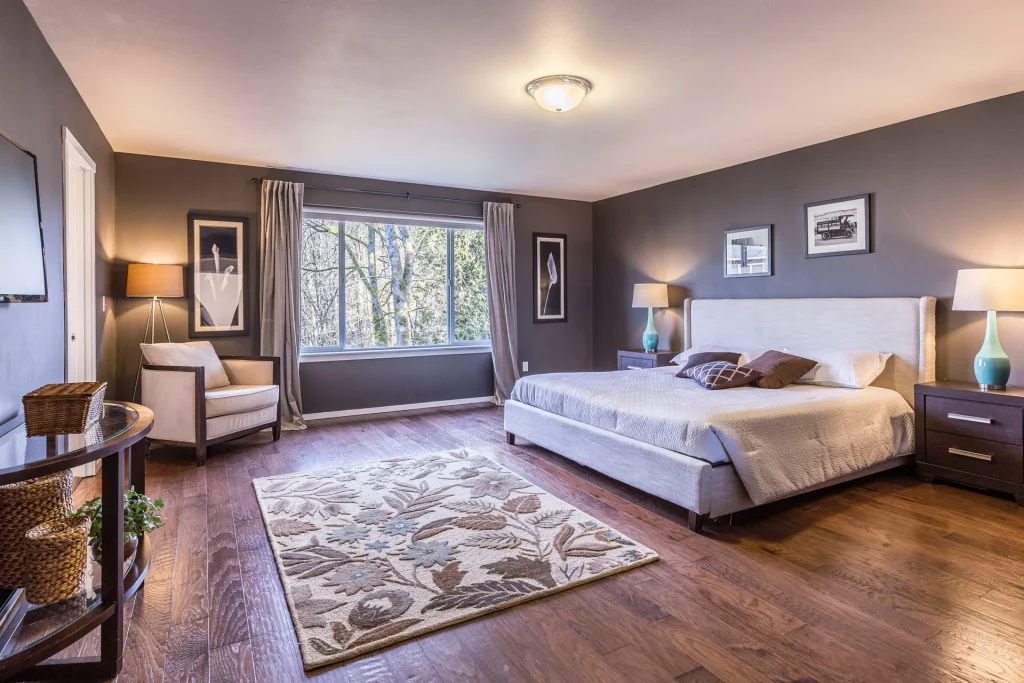
Warm White lighting is a type of artificial light that emits a gentle and cozy glow with a yellowish to slightly reddish hue. It falls on the lower end of the color temperature scale, typically ranging from 2200 to 3000 Kelvin.
Warm White lighting is designed to mimic the soft and warm illumination reminiscent of traditional incandescent bulbs or candlelight, creating a comfortable and inviting ambiance.
This type of lighting is widely favored for its ability to infuse spaces with a sense of intimacy and relaxation. When used in interior design, Warm White lighting enhances the coziness of a room, making it a popular choice for bedrooms, living rooms, and dining areas where comfort and tranquility are essential.
In home decor, Warm White lighting complements warm color palettes, such as earthy tones, browns, and beige, enhancing the natural warmth of these hues. It also complements wooden furniture and finishes, creating a harmonious and aesthetically pleasing effect.
Also read: Bright White vs Daylight Lighting – What’s the Difference?
Warm White lighting is an ideal choice for those who appreciate the warmest colored illumination, especially in spaces that prioritize comfort and relaxation, such as bedrooms and living rooms. By using LED bulbs with various watt options from the Home Depot, homeowners can explore the differences between soft white vs warm white: crafting the ideal ambiance for your home while significantly enhancing the overall aesthetic.
Soft White vs Warm White Lighting | Key Differences Explained

Soft White and Warm White lighting are two popular options with distinct differences in terms of color temperature and the ambiance they create. Let’s explore the key differences between these two types of lighting:
Soft white light offers a softer glow than warm white, making it an excellent option for fixtures that require an inviting atmosphere. In contrast, daylight bulbs can provide a cool light for areas where bright illumination is essential, allowing homeowners to learn about the various options available in watts to enhance their living spaces.
Color Temperature: A Comprehensive Comparison of Soft White and Warm White Lighting
Soft White lighting typically has a color temperature ranging from 2700 to 3000 Kelvin. It emits a warm and inviting glow with a slightly yellowish hue, similar to the cozy ambiance produced by traditional incandescent bulbs.
Warm White lighting falls on the lower end of the color temperature scale, typically ranging from 2200 to 3000 Kelvin. It also emits a warm and comforting glow, often with a more pronounced yellow or even slightly reddish hue.
When selecting light sources for your home, it’s essential to compare the different types of white bulbs available. As you learn about the options in white light—the characteristics of both soft lights and warm white bulbs, consider how each can effectively project the desired atmosphere in traditional kitchens and other spaces.
Ambiance: Exploring Soft White vs Warm White Lighting
Soft White lighting creates a gentle and soothing atmosphere, making it ideal for areas where relaxation and comfort are desired. It adds a touch of elegance and nostalgia to a room, fostering a cozy and intimate environment.
Warm White lighting exudes a sense of intimacy and relaxation, infusing spaces with a cozy and inviting ambiance. It is particularly well-suited for areas where people unwind and engage in leisurely activities.
With soft white lighting, homeowners can create a relaxing environment where friends and family can gather comfortably. By choosing the right white bulbs, you can learn how to effectively project light that enhances the overall feel of any space.
Applications of Soft White vs Warm White Lighting: A Detailed Overview
Soft White lighting is commonly used in bedrooms, living rooms, dining areas, and other spaces where a comfortable and warm atmosphere is essential. It complements warm color palettes and traditional decor, making it a popular choice for residential settings.
Warm White lighting is also preferred for bedrooms, living rooms, and dining areas, where its inviting glow sets the tone for relaxation and socialization. It is often chosen for restaurants, hotels, and other establishments aiming to create a welcoming environment for their guests.
Soft White lighting is versatile and can be used in various areas of the home to enhance ambiance and comfort. As homeowners choose between options, they can learn how different white bulbs project light to match their preferred décor and mood.
Compatibility with Decor: Understanding Lighting Choices
Soft White lighting complements warm-colored interiors, wooden finishes, and earthy tones, enhancing the natural warmth of these elements. It adds elegance and sophistication to traditional and classic decor styles.
Warm White lighting enhances warm color schemes and wooden furnishings, creating a harmonious and aesthetically pleasing effect. It works well with both modern and traditional decor styles.
When considering the use of white bulbs in your home, it’s beneficial to learn how each type can impact the overall mood of your space. By taking the time to understand these options, homeowners can make informed choices that enhance their living environments.
Brightness in Task-Oriented Spaces: A Comparative Analysis
While Soft White lighting provides a warm and comfortable glow, it may not be the best choice for areas requiring high levels of brightness or focused illumination, such as offices and task-oriented spaces.
Like Soft White lighting, Warm White lighting is better suited for creating ambiance than providing strong task lighting. It may not offer the clarity needed for detailed tasks.
Also read: What Is the Best LED Light Color for Gaming?
Choosing the correct type of lighting is crucial in creating the right atmosphere in your home. Homeowners can learn more about how various white bulbs affect the mood and functionality of each room.
Conclusion: Key Takeaways on Soft White vs Warm White Lighting
In conclusion, choosing between soft white and warm white lighting is crucial in crafting the ideal ambiance for your home, as each provides a distinct color temperature that can significantly affect the mood and functionality of a space. Soft white bulbs, which typically emit light at a color temperature of 2700K to 3000K, produce a clean, calm glow that is ideal for living rooms and bedrooms where a relaxed and inviting atmosphere is desired. This type of light minimizes strain on the eyes and enhances comfort, making it perfect for areas where you spend a lot of time winding down and seeking relaxation.
On the other hand, warm white lighting, which ranges from 3000K to 3500K, offers a slightly more vibrant and crisp light, making it suitable for kitchen and bathroom settings where tasks are frequently performed. The brighter quality of warm white lights helps in enhancing visibility and precision for cooking, reading, or applying makeup, thus aligning with the functional needs of these areas. Additionally, the slightly cooler tone of warm white compared to soft white can help in making smaller spaces feel more open and less confined, which is a subtle yet impactful way to influence the perception of your environment. Ultimately, the choice between soft white and warm white lighting should align with the specific activities and desired feel of each room, allowing you to create a nuanced lighting scheme that is both practical and aesthetically pleasing, enhancing the overall quality of life within your home.
While both Soft White and Warm White lighting options excel in creating ambiance and comfort, they may not be the best choices for areas requiring high levels of brightness or focused illumination. In such cases, cooler color temperatures like daylight or cool white lighting are more appropriate.
Soft White Vs Warm White: Crafting The Ideal Ambiance For Your Home | Understanding Color Temperature
Understanding color temperature is essential in distinguishing between soft white and warm white lighting. The terms “soft white” and “warm white” refer to different Kelvin ratings, influencing the mood and atmosphere of a space. Soft white bulbs, generally around 2700K, emit a cozy glow reminiscent of incandescent lighting, ideal for creating inviting environments. Warm white, which falls closer to the 3000K range, offers a slightly brighter yet still comfortable light. As you delve into the nuances of soft white vs warm white: crafting the ideal ambiance for your home, it’s beneficial to learn how white bulbs can transform various areas within your living space, making informed choices that enhance both aesthetics and functionality.
Soft White vs Warm White: Crafting the Ideal Ambiance for Your Home | The Science Behind Color Temperature
Color temperature plays a crucial role in how we perceive light in our environments. White bulbs learn to emit light in various tones, which can significantly influence the mood of a room. Soft white light typically has a warm hue, creating a cozy atmosphere that is perfect for relaxation, whereas cool white light can enhance focus and promote productivity. Understanding the nuances of soft white and warm white light is essential for homeowners looking to create the perfect ambiance.
The color temperature of light is measured in Kelvins (K), with lower values indicating warmer tones. In the Soft White vs Warm White: Crafting the Ideal Ambiance for Your Home discussion, the temperature of soft white light usually falls around 2700K to 3000K. This warmth makes it ideal for areas where comfort and intimacy are key, such as bedrooms and living rooms. Balancing the use of soft and warm white lighting can profoundly affect the overall feel of a space, enhancing its beauty and functionality.
How Color Temperature Affects Mood
Color temperature significantly influences how we feel in our living spaces. Soft white lighting, with its warm and inviting glow, creates a relaxed atmosphere that is perfect for winding down after a long day. In contrast, warmer tones can evoke a sense of comfort and nostalgia, making them ideal for intimate gatherings. Recognizing these elements plays a crucial role in Soft White vs Warm White: Crafting the Ideal Ambiance for Your Home, guiding homeowners to select the right lighting for their needs.
Mood can vary widely from room to room based on the color temperature of the lighting used. Bright, cooler light tends to promote focus and productivity, making it suitable for workspaces. Soft white lighting, on the other hand, encourages relaxation, making it a favorite for bedrooms and cozy areas. Understanding the impact of these light colors is essential in Soft White vs Warm White: Crafting the Ideal Ambiance for Your Home, enabling individuals to harmonize their environments effectively.
Choosing the Right Light Bulbs
Selecting the appropriate light bulbs is essential for achieving the desired ambiance in your home. The distinction between soft white and warm white lighting plays a significant role in how spaces feel and function. Soft White vs Warm White: Crafting the Ideal Ambiance for Your Home hinges not just on aesthetics but also on practical considerations such as bulb type and wattage. Understanding the correct application of these light temperatures can enhance comfort levels throughout various areas, whether it’s a cozy living room or a calming bedroom. Choosing the right bulbs ensures that each space serves its purpose while contributing to a harmonious atmosphere, aligning perfectly with the essence of Soft White vs Warm White: Crafting the Ideal Ambiance for Your Home.
Types of Light Bulbs for Soft White and Warm White
The market offers various light bulb options that cater to both soft white and warm white preferences. Incandescent bulbs typically emit a warm glow, making them a favored choice for creating a cozy atmosphere. LED bulbs have become increasingly popular due to their energy efficiency, available in both soft white and warm white color temperatures, allowing homeowners to achieve the desired ambiance while reducing energy consumption. Soft White vs Warm White: Crafting the Ideal Ambiance for Your Home often involves selecting the right bulb type to enhance each unique space.
CFL bulbs are another option, producing a soft white light that mimics the warmth of incandescent bulbs while maintaining energy efficiency. Different fixtures may also dictate the ideal choice of bulb, as certain designs work better with specific types of lighting. Understanding the characteristics of available light bulbs can greatly impact the overall aesthetic of your home. Soft White vs Warm White: Crafting the Ideal Ambiance for Your Home aims to guide you through these choices to create the perfect environment for relaxation and enjoyment.
Energy Efficiency Considerations
The choice between soft white and warm white lighting significantly impacts energy efficiency. Soft white bulbs are often recognized for their cozy ambiance, which can be beneficial for spaces like living rooms or bedrooms. However, warm white bulbs provide a similar warmth while often using less energy. Understanding the nuances of these lighting options is crucial for homeowners aiming to balance aesthetics with sustainability. Soft White vs Warm White: Crafting the Ideal Ambiance for Your Home involves not only personal preference but also considerations for long-term energy savings.
Choosing energy-efficient light bulbs can enhance the overall effectiveness of soft white and warm white lighting. LED options are particularly noteworthy, as they consume significantly less energy and have a longer lifespan than traditional incandescent bulbs. This choice reflects the broader discussion of soft white vs warm white: crafting the ideal ambiance for your home while minimizing energy costs. Opting for energy-efficient solutions does not mean sacrificing quality; rather, it enriches the home environment while being kind to your energy budget.
Soft White Lighting in Different Spaces
The choice between soft white and warm white lighting significantly influences the overall atmosphere in various spaces within your home. Soft white bulbs emit a cozy, inviting glow that is perfect for areas where relaxation is a priority, such as bedrooms and living rooms. This type of lighting enhances a sense of comfort and warmth, making it an ideal choice for intimate gatherings or quiet evenings. Understanding the nuances of soft white vs warm white: crafting the ideal ambiance for your home can guide you in selecting the right lighting to match your interior design goals and personal preferences. Each space can benefit from a tailored approach to lighting, ensuring the environment is conducive to its intended use.
Best Uses for Soft White Lighting
Soft white lighting is ideal for creating a cozy and inviting atmosphere in various areas of your home. This hue contains warmer tones that mimic the natural light of a setting sun, making it perfect for bedrooms, dining rooms, and living spaces. The warm glow can enhance relaxation, fostering a sense of comfort and tranquility. Understanding the differences between soft white and warm white becomes essential in Soft White vs Warm White: Crafting the Ideal Ambiance for Your Home, as it allows homeowners to select the perfect lighting for specific environments.
Utilizing soft white lighting in spaces where people gather can significantly enhance the overall experience. In dining rooms, for instance, it can make meals feel more intimate and enjoyable. Family rooms benefit from soft white light as it encourages conversations and shared moments. By exploring Soft White vs Warm White: Crafting the Ideal Ambiance for Your Home, you can make informed choices that align with your lifestyle and enhance the warmth of your living spaces.
Soft White Lighting in Living Areas
Living areas benefit greatly from the warm and inviting tone of soft white lighting. This type of lighting enhances the coziness of spaces where families gather or entertain guests. In discussions of soft white vs warm white: crafting the ideal ambiance for your home, soft white light creates a relaxed atmosphere that promotes comfort and intimacy, making it an ideal choice for living rooms.
Choosing soft white bulbs can transform a living space into a haven of relaxation. The gentle glow eliminates harsh shadows and creates a welcoming environment. By considering the differences in soft white vs warm white: crafting the ideal ambiance for your home, homeowners can easily select the right lighting to complement their decor and enhance the mood of their living areas.



